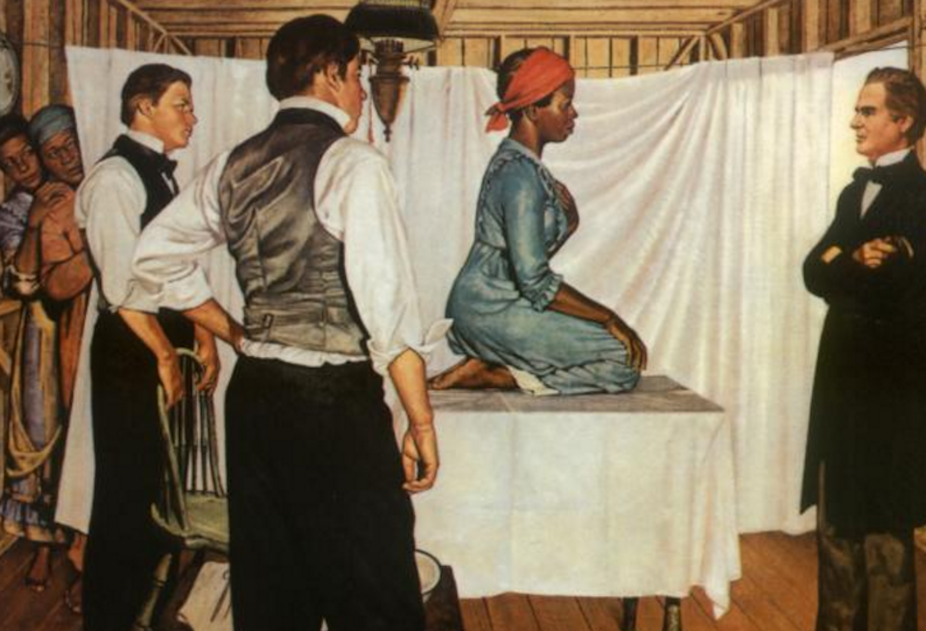Post by PaulsLaugh on Jun 23, 2022 14:00:50 GMT
borgenproject.org/the-six-types-of-modern-day-slavery/
Though we often associate slavery with the past, it is still widely practiced throughout the world today. Estimates put the number of currently enslaved people at almost 21 million. Modern day slavery, otherwise known as human trafficking, occurs when individuals are exploited through coercion or deception and typically involves restricted freedom of movement. It can take many forms that we often do not think of as slavery. Below are six specific forms of modern day slavery.
6 Types of Modern Day Slavery That Cannot Be Ignored
Forced Labor: Forced labor includes all types of enslavement that involve coercion against one’s will and a threat of punishment. The practice is typically found in industries with little regulation and many workers. It is commonly used in global supply chains by the private economy to make products. This form of slavery is also used by governments, particularly in state prisons. If the work is not voluntary and involves a threat of penalty, it can be considered forced labor. Forced labor can occur even without the presence of physical violence because it is highly ingrained in some cultures.
Bonded Labor: Debt bondage occurs when an individual is forced to work to repay a debt. As the worker labors to repay their debt, the employer can add other expenses making repayment impossible and enslavement permanent. This type of slavery is often used to make consumer products. It particularly targets migrant workers looking for an economic opportunity who incur debt for travel or housing expenses. The debt involved can also be generational, so children can be born into a situation where they must work to repay a debt incurred by their parents.
Domestic Servitude: This type of slavery consists of live-in domestic workers who cannot leave of their own free will. Since authorities are unable to easily inspect homes, this modern day slavery is easy to hide. It is also extremely difficult to detect because enslaved individuals can appear to be nannies or other types of domestic workers. As a form of bonded labor, domestic servitude often affects migrant workers who incur a debt to their employer for travel or recruitment that they are unable to pay back.
Sex Trafficking: Sex trafficking occurs when women, men, or children are forced to engage in commercial sex acts. Commercial sex involving children under age eighteen is always considered sex trafficking. Those living in extreme poverty are particularly vulnerable to this practice because of their economic marginalization and lack of education. They can be lured overseas through false employment opportunities. Victims suffer physical and psychological trauma and potential legal charges.
Forced Marriage: This type of slavery occurs when an individual lacks the option to refuse marriage or is married to someone else by relatives. Forced marriage can also happen when a wife is married in exchange for payment. This practice is characterized by a lack of consent by at least one party. A major motivation of this type of slavery is cultural tradition or threats. Forced marriage of a child under the age of eighteen is called early marriage. Girls are more common targets for this because they can be controlled through sexual violence.
Child Labor: Any form of modern day slavery that involves children under 18 is considered child labor. More than a quarter of slaves today are children, and many are involved in occupations that are harmful mentally or physically. The demand for cheap labor and specific physical characteristics increases the use of child workers. Children are also easier to control and usually do not demand better working conditions or wages. Those living in poverty are especially vulnerable because of the desire or need to support their families due to a lack of education and employment opportunities.
These are six of the most common types of modern day slavery, but the practice is not limited to just these forms. Slavery still occurs throughout the world in practices that are not always easily recognizable. Governments and organizations must remain informed about the occurrence of modern day slavery to be able to stop it in its tracks.
6 Types of Modern Day Slavery That Cannot Be Ignored
Forced Labor: Forced labor includes all types of enslavement that involve coercion against one’s will and a threat of punishment. The practice is typically found in industries with little regulation and many workers. It is commonly used in global supply chains by the private economy to make products. This form of slavery is also used by governments, particularly in state prisons. If the work is not voluntary and involves a threat of penalty, it can be considered forced labor. Forced labor can occur even without the presence of physical violence because it is highly ingrained in some cultures.
Bonded Labor: Debt bondage occurs when an individual is forced to work to repay a debt. As the worker labors to repay their debt, the employer can add other expenses making repayment impossible and enslavement permanent. This type of slavery is often used to make consumer products. It particularly targets migrant workers looking for an economic opportunity who incur debt for travel or housing expenses. The debt involved can also be generational, so children can be born into a situation where they must work to repay a debt incurred by their parents.
Domestic Servitude: This type of slavery consists of live-in domestic workers who cannot leave of their own free will. Since authorities are unable to easily inspect homes, this modern day slavery is easy to hide. It is also extremely difficult to detect because enslaved individuals can appear to be nannies or other types of domestic workers. As a form of bonded labor, domestic servitude often affects migrant workers who incur a debt to their employer for travel or recruitment that they are unable to pay back.
Sex Trafficking: Sex trafficking occurs when women, men, or children are forced to engage in commercial sex acts. Commercial sex involving children under age eighteen is always considered sex trafficking. Those living in extreme poverty are particularly vulnerable to this practice because of their economic marginalization and lack of education. They can be lured overseas through false employment opportunities. Victims suffer physical and psychological trauma and potential legal charges.
Forced Marriage: This type of slavery occurs when an individual lacks the option to refuse marriage or is married to someone else by relatives. Forced marriage can also happen when a wife is married in exchange for payment. This practice is characterized by a lack of consent by at least one party. A major motivation of this type of slavery is cultural tradition or threats. Forced marriage of a child under the age of eighteen is called early marriage. Girls are more common targets for this because they can be controlled through sexual violence.
Child Labor: Any form of modern day slavery that involves children under 18 is considered child labor. More than a quarter of slaves today are children, and many are involved in occupations that are harmful mentally or physically. The demand for cheap labor and specific physical characteristics increases the use of child workers. Children are also easier to control and usually do not demand better working conditions or wages. Those living in poverty are especially vulnerable because of the desire or need to support their families due to a lack of education and employment opportunities.
These are six of the most common types of modern day slavery, but the practice is not limited to just these forms. Slavery still occurs throughout the world in practices that are not always easily recognizable. Governments and organizations must remain informed about the occurrence of modern day slavery to be able to stop it in its tracks.






